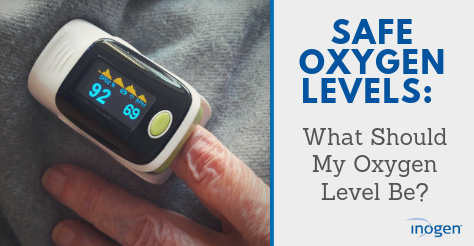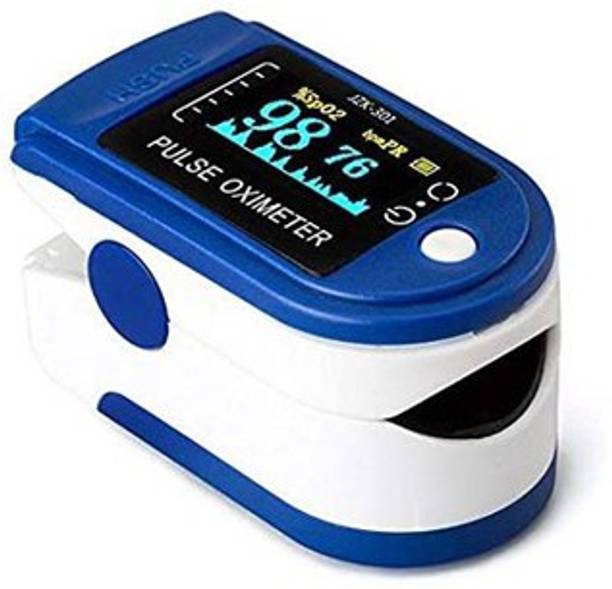If your levels are below 90 you have a very low oxygen saturation and it’s going to help a lot when you use the concentrator. Now you know how to check your oxygen saturation using a pulse oximeter and also how to set your oxygen concentrator flow to the right dosage of oxygen. A normal arterial blood oxygen level typically falls between 75 and 100 mmHg. Your blood carbon dioxide level and pH - a measure of acidity or alkalinity - are usually measured along with the. Normal arterial blood oxygen saturation levels in humans are 95–100 percent. If the level is below 90 percent, it is considered low and called hypoxemia. Arterial blood oxygen levels below 80 percent may compromise organ function, such as the brain and heart, and should be promptly addressed. Optimum oxygen concentration for an organism is the oxygen level that promotes the fastest growth rate. The minimum permissive oxygen concentration and the maximum permissive oxygen concentration are, respectively, the lowest and the highest oxygen levels that the organism will tolerate.
Sleep is an amazingly restorative time for our bodies. So much healthy, transformative change happens, even though we’re completely unaware of it. Go for mac free. Many of these transformations, like cell renewal, tissue repair, and memory consolidation, can be attributed to the saturation level of oxygen in our bodies. A consistent oxygen supply is essential to these processes.
Sometimes, our sleep health is jeopardized by reduced oxygen levels. Sophos for mac home edition. Thankfully, there are a lot of tools and techniques available to increase blood oxygen levels and maximize recovery during sleep.
The role of oxygen in each stage of sleep
When we are awake, our breathing patterns vary frequently. This is because we’re so busy doing other things that affect how we take air in. Normal activities like talking and exercising and other factors such as our posture and our emotions play a role in our daytime oxygen intake.
During our waking lives, our breathing patterns may change, but we’re always breathing. When we’re asleep, however, it can be a different story. As we slowly make the transition from being awake to the early stages of sleep, our breathing rate becomes slightly slower, very regular, and there is a slight dip in body temperature.
As we move into deeper phases of sleep, our heartbeat slightly slows down as our body relaxes further and brain activity patterns change. Growth hormone is produced, promoting tissue growth and repair. Extra oxygen is supplied to muscles as we enter REM sleep. Our brain activity starts to increase again, our eyes dart rapidly beneath our eyelids, and vivid dreams most commonly occur in this stage. Eventually, we journey out of REM sleep and awaken.
When oxygen gets interrupted
Optimum Oxygen Levels For Copd Patients

In a perfect world, consistent, uninterrupted breathing for the entire length of time we’re asleep would have us waking up feeling remarkably refreshed, and our bodies ready to function at their optimal capacities. However, this is not a reality for everyone.
Optimum Oxygen Level In Humans

Roughly 100 million people in the United States alone are sleep deprived, meaning the amount or quality of the sleep they get on any given night is not adequate. It is estimated that as many as 45 million people in the United States--and up to one billion worldwide--have sleep apnea, a condition where breathing stops periodically during sleep.
A lack of breath means a lack of oxygen, and this is exactly what happens when sleep apnea occurs.

What causes blood oxygen to be low?
There are a multitude of factors that can contribute to low blood oxygen levels.
In addition to sleep apnea, various diseases and medical conditions may impair the respiratory system in providing optimal oxygen amounts to the body. These conditions include chronic obstructive pulmonary disease (COPD), emphysema, asthma, anemia, and heart disease or heart failure.
How to increase your oxygen levels while sleeping
There are many ways for you to naturally boost your oxygen saturation, and many of them cost little to no money. Developing good habits during the day that promote a healthy intake of oxygen can often set you up for success when it’s time to fall asleep.
Here are a few strategies to increase blood oxygen levels while sleeping.

1. Practice taking deep breaths
Performing deep-breathing exercises can have a calming effect, but the benefits go far beyond a more relaxed mind--your blood oxygen levels can rise, too. Taking deeper breaths can also increase the amount of oxygen in the bloodstream. Bonus points for getting out in the fresh air, away from vehicle emissions.
2. Sleep on your side
Most people breathe better when they sleep on their side compared to any other position. The reason is amazingly simple: gravity. When we sleep on our backs, the weight of our bodies can press down on our airway or lungs, causing unnecessary obstructions. Side-sleeping has long been known to protect the airway from unwanted collapse and reduce snoring too.
